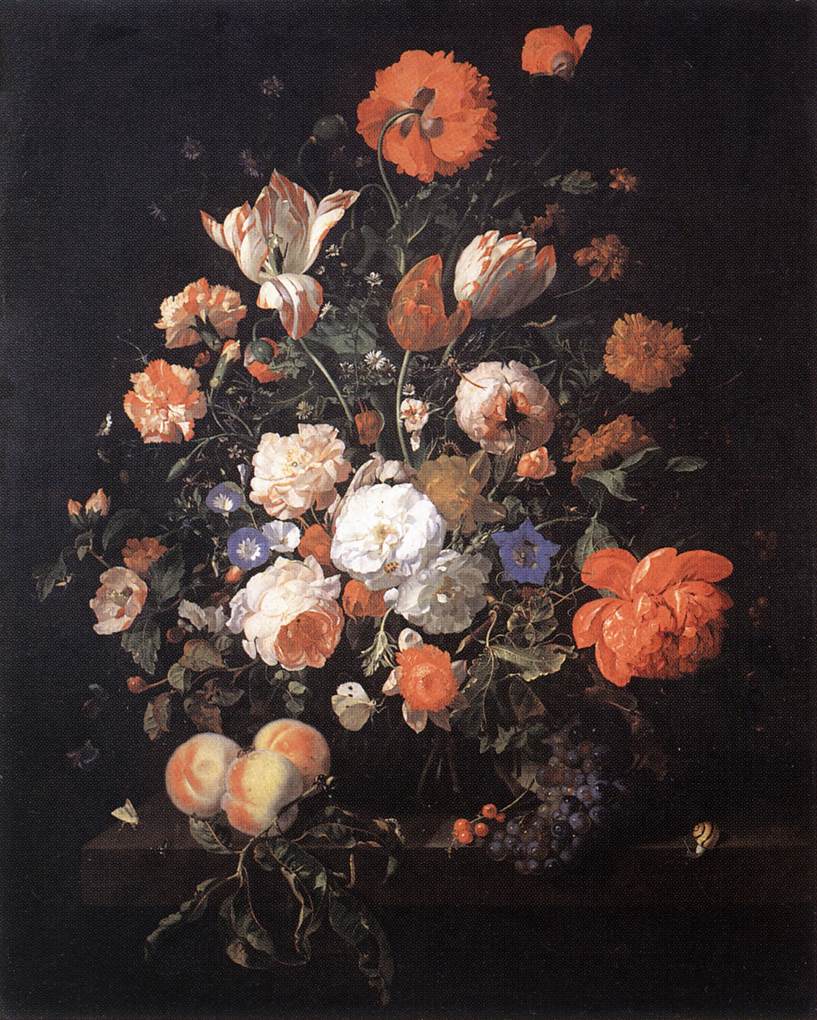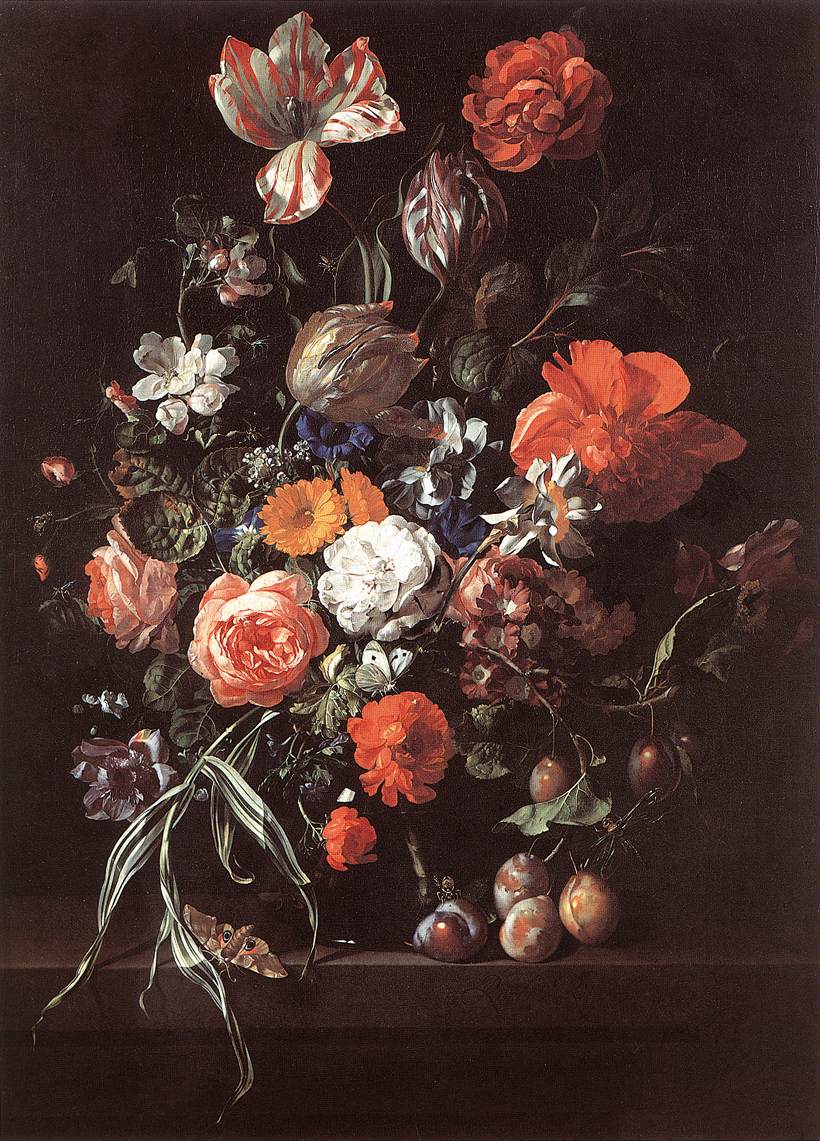
RUYSCH, Rachel (baptised The Hague, 3 June 1664 – died Amsterdam, 12 October 1750), still-life painter. Daughter of Frederik Ruysch (1638-1731), professor of anatomy and botany, and Maria Post (1643-1720). Rachel Ruysch married Jurriaan Pool (1666-1745), painter, on 12 August 1693 in Amsterdam. The couple had 10 children.
By the time she was fourteen, Rachel Ruysch was painting animals and plants with such enthusiasm, diligence and skill that her parents gave her permission to study with a painter. For a girl this was not unheard-of, but still highly unusual. Otto Marseus had died in the meantime, so Rachel was apprenticed to Willem van Aelst, who was considered the best still-life painter in Amsterdam. Van Aelst was an acquaintance of Otto Marseus (with whom he had worked in his younger years at the court of the Medici in Florence), and he belonged to her parents’ circle of friends.

In the summer of 1695, Johann Wilhelm, the Elector Palatine, visited Frederik Ruysch’s museum. On that occasion he undoubtedly saw paintings by Rachel, who had meanwhile married the painter Jurriaan Pool. She had just given birth to her first child, but motherhood did not prevent her from continuing her career as a painter, whereas her younger sister Anna, likewise a gifted painter, had stopped painting when she married. Rachel had meanwhile become very successful. She was paid substantial sums for her flower still lifes, and in 1699, in recognition of her work, she was asked to become a member of the Hague painters’ confraternity Pictura. She was the first woman to receive this honour.

Rachel was given commissions by wealthy clients and could thus concentrate on painting only a few works per year, devoting several months to each. Orders had to be placed a long time in advance. In 1708 she was offered the post of court painter to the Elector Palatine. By now the mother of a large family, she was reluctant to go and live in Düsseldorf, and was therefore exempted from her Residenzpflicht, the obligation to live and work at court. This was not a unique construction: Adriaan van der Werf and Jan Weenix were also appointed court painters without having to make their homes in Düsseldorf. Rachel Ruysch received an annual stipend, for which she was required to make only one painting a year for the collection of the Elector and his wife.
She travelled to Düsseldorf a couple of times to deliver her work, but she continued to live in Wolvenstraat in Amsterdam with her husband and numerous children. Even though she was almost 30 when she married, she gave birth to ten children, the last of whom, a boy, was born when she was 47.
Jurriaan Pool was commissioned by the Elector to paint Rachel’s portrait. He turned it into a family picture, painting Rachel and himself with Jan Willem, showing the medallion he had been given by the Elector.
The painters’ biographer Johan van Gool met Rachel in 1748, when she was 84. ‘For a woman of such a ripe age’, he records, she had kept ‘her mind and her appearance wonderfully well’. She received him very kindly and politely, told him about her career, and showed him some of her work. Most of her paintings had been sent abroad, but she showed him a painting started the year before, which she still hoped to finish.
full article
No comments:
Post a Comment